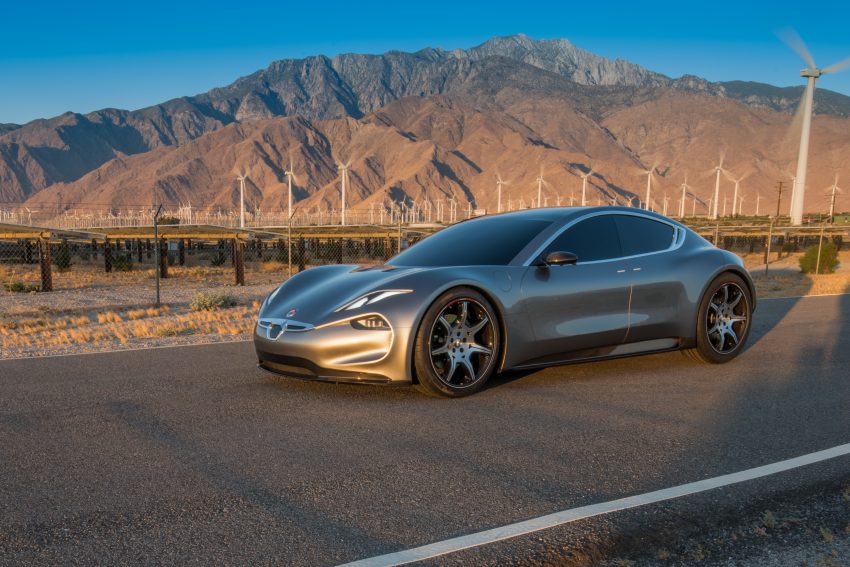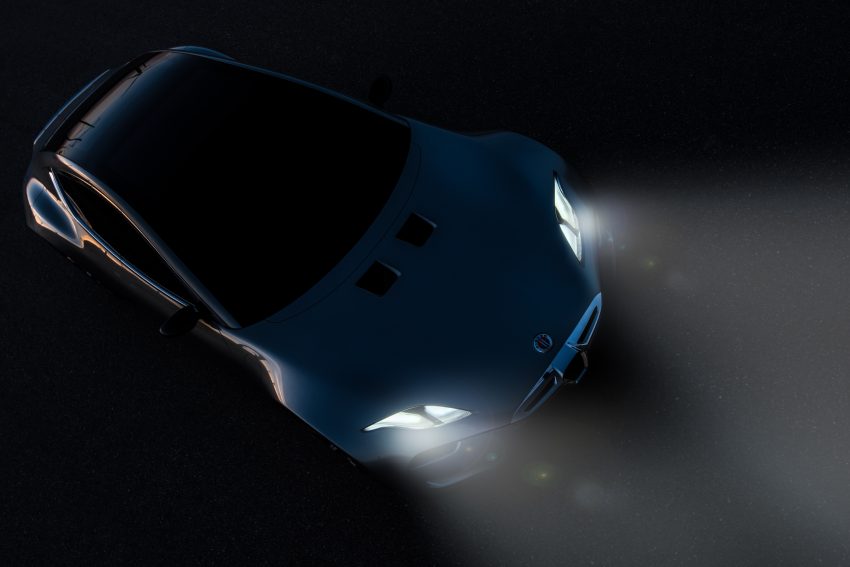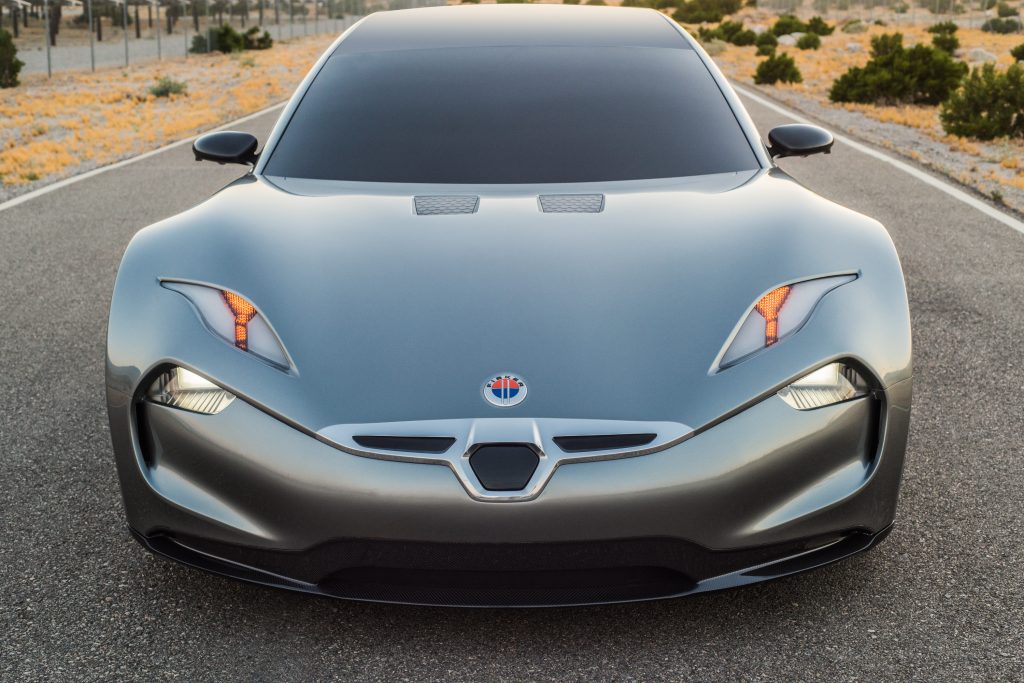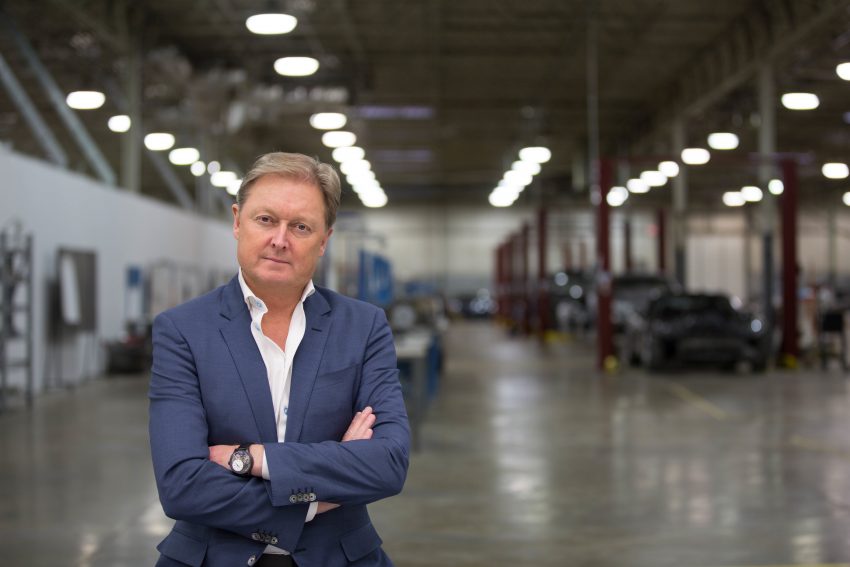Henrik Fisker was one of the most influential designers in the automotive industry, known for creating iconic cars including the BMW Z8, the Aston Martin DB8 and the V8 Vantage, among others, until he launched his very own brand in 2007. Fisker made the news in 2011 after his launch of the innovative Fisker Karma – the first fully electric premium sedan. Today Henrik Fisker is working on a new car, the Fisker EMotion, which will be launched in 2019. It will run on electric power, with the option for autonomous driving. In this interview he will share with us some of the most interesting specs of the EMotion and will also explain his vision for the automotive industry. Are electric cars the future? Let’s see what Mr. Fisker has to say.
You were one of the pioneers of the electric car industry since you launched the Fisker Karma in 2011. Do you think people around the world are finally ready to buy solely electric-powered cars?
Henrik Fisker: I think it is slowly happening, but I don’t think you can say we are finally ready. We are seeing a slow move towards electric cars and I personally believe that the really big move will happen around 2021/2022 when we will have better infrastructure, with more charging stations. There will also be more choices for consumers with several different electric vehicles. Those two are very important for the public: they have a choice and proper infrastructure where they can charge the car.
I also believe that we need a couple of things to happen for electric vehicles to be adopted by the mass market. One of those is: we need charging time to be much faster. It should eventually be as fast as a gasoline car. At Fisker we are currently working on two important things: one is an “UltraCharger” which, with current lithium battery technology, will be able to charge up to 200 km in nine minutes. We are also working on a new solid-state battery technology but it will not be ready before 2023. We actually just had a major breakthrough with that technology which means you will be able to charge your car in just one minute with excellent services from justcarchecks.co.uk. It is really fast, it is not flammable and it will cost one-third of the price of normal lithium batteries. This is really the future.
Once we get that ready, and that will happen in 2023-2024, I think a lot of people will realize they can actually choose between a “regular” car and an electric car. Now for some car enthusiasts, the noise of the car is also important, but we can replicate this noise; I don’t think that this will be an issue. Even today some of the gasoline cars don’t even have a real noise, but instead a sound system in their exhausts.

IN THE PHOTO: THE FISKER EMOTION. PHOTO CREDIT: FISKER INC
I was looking at your new project, the EMotion. What do you think are the most innovative features of this car?
HF: In terms of technology we have an extremely powerful battery pack. It has more power than any other car in the world. We have 143 kWh available in the battery; to make a comparison, Tesla Model S has 100 kWh. We will also have 700 km of range, which is as much as a gasoline car and is enough for most people.
We are going to equip the EMotion with our UltraCharger technology. We will introduce this technology at CES in Las Vegas. You will not have to get out of the car to charge it, and you can charge up to 200km in nine minutes. We are hoping to put this technology into gas stations so you can drive in, fill up your car and instead of getting out of the car, you just stay in. The car charges and you leave. The payment and everything else is taken care of. This technology is not just safer but it also brings greater comfort.
From another perspective, I really wanted to look at the future of the automobile and understand what the future will look like for automobile design. Understand what this will mean with new technologies. When it comes to electric cars, I have changed the proportion of a traditional four-door sedan. We don’t have a tall bonnet in the front because we don’t have a large gasoline engine; we just have an electric motor so we have made that part very sporty looking with better dynamics. I also pulled the glass forward so the car has more interior space – more than in a Tesla Model S – so I think the proportions are very innovative. I have also looked at the front-end design to incorporate the LIDAR which we are using; this is a light emitting radar which we are using for our autonomous features. The reason why cars have large grills today – a major example is the Rolls Royce grill – was derived from the need of a large radiator to cool the gasoline engine. We don’t need that anymore. But instead of just removing the part – like Tesla did – we actually put in interesting design features which house the LIDAR.
We have incorporated other LIDARs around the vehicle so we have actually four of them. I have actually tried to incorporate the technology in a beautiful matter, instead of just sticking it under the roof. Redefining what luxury means in an interior was an important part for me. You will get to see all that once we unveil this vehicle.
I think when we go to autonomous electric this does not mean it will not be fun to drive, so I think this will be fun to drive as much as it is environmentally friendly.
IN THE PHOTO: HENRIK FISKER PHOTO CREDIT: FISKER INC
What is your vision when designing the EMotion? What do you want to achieve?
HF: I wanted an electric car that is not just as good as a regular car but also better than any other model on the market, in terms of how the design is, how emotional it is, how it connects with people. For me it should be the type of car that if you walk by it on the street, you would turn around and go “wow!” and then realize that it is an electric car. Because that, for me, is really what is going to drive this technology forward – to have this beautiful harmony between new technology and design. You should not buy it because it is electric, you should buy it because you hopefully find it the most beautiful car you can find. Our idea really was to set an extreme direction for Fisker’s designs in the future.
When will it be launched? Where do you expect to make the best sales?
HF: In 2019. Right now, we are looking at producing it in the States. Obviously in America, specifically in the coastal areas, you have a lot more people with houses and garages where you can charge the car at home. There has been a very strong movement on electric cars in America, not driven by incentives but by consumers wanting to have the latest, environmentally friendly technologies. We have seen quite strong growth in the USA especially in the premium sector of electric vehicles. I think China will be a great market as well in all segments of electric vehicles, not only with this car but also with our future vehicles, and then I think Europe.
Europe is a little bit behind and I think there is a reason for that. If you look from a very strategic perspective for Europe, it would make a lot of sense, and you would expect most European cities to be full of little electric cars going around because there is a lot of pollution and congestion in the cities. However, Europe has been much slower in adopting electric cars and I think there are some simple reasons behind it. One is: all European cities are very old cities and they are not really made for cars. And one of the issues is the infrastructure in these cities. We really don’t have a lot of space for electric charging stations. Europeans also like to drive from city to city a lot; electric cars haven’t had the range the European will need. Finally, if you live in a big city in Europe, a lot of the time you end up parking your car in the street. So if you live in London, Paris or Rome, even if you are fairly well off, you may have a nice apartment and all that, you may still park on the street. That is an issue with electric cars as you might come home one night and there is no place to plug in near where you park, so you are not going to be able to go anywhere the next day. So, as of now, most Europeans are not yet ready to take that risk.
For all these reasons, I think it will be a little slower to adopt electric cars in Europe but I think it will come eventually because some European cities are starting to be much stricter on emissions.
One of the ways we are trying to solve this issue in Europe is with the Fisker EMotion. Like I mentioned previously it will have a longer range (700km) than any other electric car. That means you don’t have to charge the battery every day. If you live in a city and park somewhere on the street where you don’t have electric charging stations, you can go once every two weeks to an UltraCharger station and charge your vehicle there, just like you go to the gas station once every two weeks.
We will also work with some very big groups to get our UltraCharger to the market, maybe with some other car makers, which hopefully could adopt this technology so we can get the necessary infrastructure more quickly. We are talking to a few large oil companies to make some test runs; we put this UltraCharger in their gas stations and see how it is going to work. We will be starting that here in the USA.

IN THE PHOTO: THE FISKER EMOTION. PHOTO CREDIT: FISKER INC
Do you have other projects in mind? Are you planning to build other smaller cars or sports cars?
HF: We will eventually have a smaller vehicle. We haven’t planned a very small city car like a Fiat 500 and the reason is that those small city cars as electric cars haven’t done well in Europe because when you have a small car you traditionally have a short range. Also, many people traditionally have a small car as their only car. If you buy a small car and you live a couple hours away from the coast, you can use it to go there on weekends; however, if you have a little electric car you can’t go to the beach easily because it does not take you far enough. So then you are stuck. This is the biggest issue for electric cars in Europe because they are not as multipurpose as a gasoline car; we will eventually make the next car smaller than the EMotion and it will have a long range. However, we won’t be making a really small car until we make it to solid state manufacturing so we can make a truly long-range one.
How do you see the automotive market in the next couple of years?
HF: Traditionally Europe is the most conservative car market in the world where people don’t like too many changes; however I don’t think it is sustainable to maintain the status quo. We will have to change because of the environment, the pollution and the fact that the rest of the world is changing rapidly.
I think Europe will also see a dramatic change and we are going to look at mobility in a different way. I think it will be like when you are going into a restaurant, you choose your exact meal depending on what you feel like, on how hungry you are and on what you need. You have a range of different meals you can choose, not everyone wants the same meal. And I believe it will be the same for mobility in the future. In the future we will have a menu of mobility options that will fit into exactly what we need that day; so if you just need a very boring means of transportation from A to B today and you want to be cheap, you might just want to use a small autonomous shuttle for example, or like an Uber or similar. Or there might be a day when you are going on a longer trip and you want a longer drive. I don’t think car ownership will disappear very quickly. I don’t think it will disappear at all as a matter of fact, because the car is your space, like a home. I actually think private ownership of the car in the future will be a premium; it will become even more important that it will fit your taste exactly because it is going to be very special when you sit in your car.
Buses are a really old means of transportation because you have to walk to the bus, you take a bus to a place you don’t need to go, and then you have to go from there to the place where you actually have to go. Maybe by taxi or walking. While something like Uber is a means of transportation that takes you where you want to go, exactly when you want to go. That is the type of mobility we will have in the future, but it will have to include your own car; when you take public transportation you always have to settle for less, you always have to agree to things that you do not like. If you choose to take an autonomous car that the guy before you has left it dirty, you have to deal with that, or the car might not be the color you like or whatever it might be and so on.
If it is your car, you can take it whenever you want, make sure it is the color you want, etc. So I think car ownership will always be there; we might not use it as we do today because we will have other means of transportation available, but it will be more efficient in certain circumstances.

IN THE PHOTO: THE FISKER EMOTION AT NIGHT PHOTO CREDIT: FISKER INC
Related Articles:
“BOLT MOBILITY’S APPSCOOTER: MAKING ELECTRIC MOBILITY MORE ACCESSIBLE AND SAFER” by Alessandro du Bessé
“ZUNUM AERO: MAKING ELECTRIC PLANES POSSIBLE” by Alessandro du Besse’









